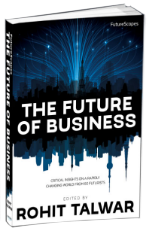12 Jan 4 Reasons Why P&G Ad Featured Resilience Parents – not Helicopter Parents
During most of the years that I have covered parenting trends there has been a growing tendency to overprotect children. This phenomenon has in the United States and some other countries been dubbed helicopter parenting. Other places the tendency to micromanage ones progeny is known as curling parenting and the term hyper parenting has also been thrown around for a while. Lately the term velcro parenting or velcro families has entered the vernacular, indicating that many are taking the concepts of attachment parenting quite literally.
The Boomer parents birthed the idea (sorry the pun) that children’s’ bodies, psyches and safety have to be closely monitored and protected at all times. Back in the early 90s America watched with aghast the rising crime rate – at least media’s version of it, juvenile delinquencies and other real or perceived ills associated with Generation X youngsters. So in response to the neglected children of the 70s, the next generation was to be cultivated from the start, which kindled much more involved and pampered parenting styles. When Generation X took over the parenting baton, they continued the safety obsession, but they will at the very least value their Homelander kids’ need for elbow room even if fear sometimes gets the best of them. Freedom and autonomy are likely the most precious values in Generation X’es own lives (they grew up with it), so they can at least resonate with the traumas of bubblewrapped childhood.
But the backlash had to come. I, for one, have particularly enjoyed following the various counter trends against the helicopter/ hyper variant of child rearing that seems to dominate the fear laced “what to expect”-paradigm of today. As a mother I am one of those who often feel the need to stem the flow from my own amygdala’s oversensitive fear center. Slow parenting, minimalist parenting, and not least, the free range kids movement – whose founder Lenore Skenazy shared this ad – are all reactions to this idea that the next generation are precious little china dolls incapable of encountering our unedited world with all it’s rough spots. For the last year or so I speculated that we’re watching a growing movement which I have called resilience parenting. Resilience parents are not insensitive, pull-yourself-up-by-your-bootstrap type douche bags who send their kids out to hunt squirrels to roast on the bonfire when they’re hungry. But they are less likely to avoid the inevitable falls or give them a trophy just for showing up. Resilience parents focus less on seeking success through preventing failure, but will rather embrace failure as a necessary stepping stone toward future success. Resilience parents are less concerned with a perfect report card and more concerned with their children’s grit, perseverance and flexibility in the face of change or challenge. Resilience parents will often believe that less is more.
The following is an Olympic themed ad from P&G. I think there is a reason that this ad is playing now and not 5 or 10 years ago. Below the movie clip I will mention four reason why I think we are seeing this now.
- Too much worry already! We have much more to worry about today than we did 15 years ago. Terrorism, recession, global warming. The list goes on. So an unintended consequence of all these real world problems might be that we worry less about what’s not worth worrying about. Such as a toddler tumbling onto his/her cushioned behind. Because that’s what toddlers do.
- Resilience movement. The newest buzzword among futurists these days is resilience. Increasingly from environmentalists you might hear resilience used more often than sustainability. The difference between sustainability and resilience is the difference between trying and avoidsomething from happening and finding ways to adjust to a situation you can’t prevent. The parallel in parenting is clear. You can’t prevent your child from falling. You can only provide comfort and guide it back on it’s feet. Actually you don’t want to prevent the fall because a child who never falls never learns.
- Shifting perception of safety/ non-safety. Protected children who spend their days indoor because it’s too “unsafe” outside run the risk of passivity related health problems such as obesity and generally poor health. Children who do go out will come home with bruises from time to time, but learn motor skills, social interactions and a whole lot of other life skills that simply don’t happen during highly structured indoor gymboree sessions. The statistics also show that the outdoors are indeed getting much safer with violent crime being at an all time low. Declining child health due to problems such as childhood obesity on the other hand are persistent and much more prevalent. Another example is our changing views on germs. Know some over-zealous Purell Parents? Well, turns out some of these germs are not only bad but essential in building your child’s immune system. So what we used to deem unsafe are starting to fade in comparison the “dangers” of excessively implementing safety measures to prevent them. Public opinion is hard to change, but there are finally signs of a shift.
- Millennial parents. Today most children will be born to millennials. This generation was highly monitored and protected as children. Following the idea that we often compensate for our parents’ parenting mistakes, millennials could truly become the parenting generation that kisses helicopter parenting good-bye. Look out for more “resilience related” ads and messages. And please let me know what you find!
Photo credit: Photochiel @ Flickr, P&G Advertisement


Sorry, the comment form is closed at this time.